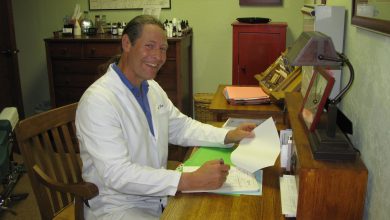Eco Nest – Living Sanctuaries of Clay, Straw, Timber
EcoNest is the name given by Paula Baker-Laporte and Robert Laporte to describe their holistically designed and hand-crafted natural homes. An EcoNest incorporates timber-frame, straw-clay walls, earth plasters and natural and non-toxic finishes. This combination of time-honored building traditions with modern innovations results in a home of unsurpassed health and comfort.
The EcoNest Company was founded in 1996 and is now based out of Ashland, Oregon, along with its sister company EcoNest Architecture Inc. Accomplished authors, lecturers and workshop leaders, Paula and Robert work with clients all around North America and in Central and South America, helping them plan, design and build their own EcoNest structures. We met with Paula to learn more about their work, as well as to hear about exciting new developments in the EcoNest company.
Paula, thanks for taking the time to catch up with us as you and Robert have been busy.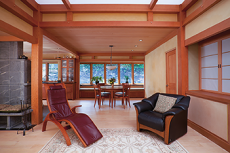
Yes we have! Our new book, The EcoNest Home, came out this year and coincided with the inclusion of Light Straw Clay into the newest version of the International Residential Code. Both of these were long-term labors of love for us. In addition we have seen many of our dreams for larger outreach for our work come to fruition.
You guys are doing great work and it is exciting to see how the word EcoNest is starting to take on a life of its own.
After 20 years with EcoNest as our central focus we seem to be gaining traction. Our workshops are filling more quickly and they are covering a wide geographic range. We are designing projects all over the country and we have a team of Affiliates to whom we can send clients in their region and who are bringing clients to us. We got a real kick recently when someone sent us a cyber discussion string about natural building. The person was so confused about the many natural building options and various hurdles involved that he concluded with “might as well just build an EcoNest.” We were blown away by the implication that we were practically “mainstream” and yet that has been our goal over the years: to bring natural building into the mainstream as a viable option for anyone interested.
I would love for you to talk more about the type of reputation that EcoNest has established over the past 20 years and the affiliates around the country now building EcoNest homes. 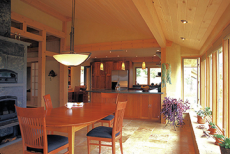
We have always known that there was a need and a longing for natural homes. We have had a lot of people visit us over the years and the response is always the same. People love the feel of a well-designed and well-built natural home. When our first book came out, we began to receive inquiries from individuals all over who read our book and wanted an EcoNest home. In response we developed a 16-day training that would teach a good quality builder how to build one of our homes. Once that was in place we were able to introduce our website to builders who wanted to be more involved so that people now had a chance of finding someone in their area who was trained to build an EcoNest. The EcoNest Affiliate system was born. We didn’t want to franchise because we wanted to freely recommend those builders who were qualified for building our system based on their talents. Ideally we would have Affiliates throughout the country, so a potential EcoNest client could have a choice of trained Affiliates in any area or if they already had a builder, we could train them.
I’d love to hear more about some of these projects that you guys are doing, in terms of size, scope and location.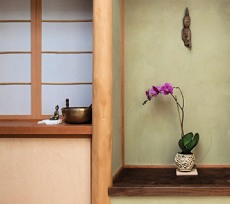
This season Robert is leading workshops that will build the shells of homes in Weed/Shasta, Portland and Ottawa. The architectural office is currently working on homes in Concord, Massachusetts; Boise, Idaho; and Colorado. All of these are either for Affiliates or former workshop attendees.
Paula, please talk more about the cost-size-quality equation in relationship to an EcoNest vs. what we typically run across in a conventional house.
The first question people often ask, and rightfully so, is: ‘Can I afford to build an EcoNest?’ A hand-crafted, healthy home will always cost more than a conventionally-built home, no matter what the materials. The quality is a given but the size is an area where we can really work to help people come within their budget. So many homes are large but inefficient in design, with spaces that are too big to be cozy or spaces that have no purpose. We specialize in smaller, very efficiently-designed homes where every inch of space counts. Often people come in thinking they need 2,500 sq. ft. or larger based on their current homes or homes they have looked at. People are often very surprised when we tell them the actual size of the EcoNest they are in. Suddenly they realize that they can be happy with a smaller footprint while gaining more energy efficiency, cozy spaces, and health in the bargain. A bi-product is often a re-balancing of the equation to more quality/less quantity.
In your latest book The EcoNest Home you go into great depth of the philosophies behind your work, as well as actual building techniques and case studies.
Yes, we are very pleased to have this new book out there on both of those counts. It is useful for homeowners, designers and builders who want to explore health and ecology by giving them a firm foundation in Building Biology. It has very detailed instructions for building a light straw clay home. It is an invaluable companion to our workshops.
Can you talk more about the experience of participants in workshops?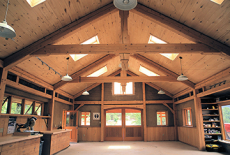
Building a holistic building requires a holistic builder. It is not construction as usual. Comparing how we build a home to how we obtain our food, it is like the difference between shopping at Safeway or the co-op. One of those two options is local, organic, nutritious, friendly and invites participation. Robert refers to his role as workshop leader as “Building the Builder.” Each day begins with mindful bodywork, yoga, Tai Chi etc. Workshops feature healthy and organic meals. The goal is to foster teamwork, craftsmanship and leadership as he sets out to cultivate the innate craftsman in each student through the workshop experience. In other words, the goal is to guide students as the wood, straw and clay teach them about the joys of working with nature’s building supplies.
On top of books, workshops and trainings, you also provide design and planning services for individuals wanting to build their own EcoNests. Please say more.
Actually designing homes and communities is the main focus of the architectural company EcoNest Architecture. The architectural office also provides consulting on healthy homes and I teach seminars for the International Institute for Building Biology and Ecology.
An exciting project you both will be involved here in Southern Oregon will be the Novalis Project.
The vision is to create facilities for 24 students in a semester-long, accredited immersion course in all aspects of sustainability. The goal is to train the ecological leaders of the future. I can’t think of a more worthwhile endeavor to focus on at this time and we feel honored to be a part of this.
Paula, I would be curious for you to talk about the partnership that you and Robert share together and how you have been able to go about and create your great body of work.
We feel very fortunate to share our passion for creating these spaces. It is a true collaboration at its core and then we each have very different “careers” within that. I am enjoying working on design with our future EcoNest Owners in collaboration with my great architectural team. Robert enjoys working with a growing team of Affiliates in teaching our future builders and homeowners on the hands-on side. We both love to do talks about this way of building whenever the opportunity arises.
EcoNest Architecture recently received a People’s Choice Award. Would you please say more about this?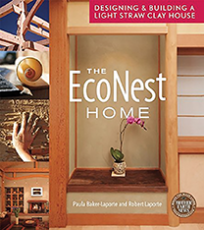
The Southern Oregon AIA People’s Choice Awards is an event held during the Art in Bloom festival in Medford, Oregon. The event brings together the work of local architects and landscape architects, inviting the public to view the projects and vote on their favorites. Members also have a chance to vote on their colleagues’ work as part of the Colleague’s Choice Awards. EcoNest Architecture was pleased to be awarded the People’s Choice 1st Place Award for Residential New Construction.
On top of buying a book or attending a local workshop, what opportunities do you offer to individuals in Ashland wanting to learn more about EcoNest?
We love living in Ashland because of the great people here. If we could do nothing but build right here for the rest of our lives, we would be very happy to do just that. We love to meet with local folks who are interested in what we do. Whether you are thinking of building a home soon, dreaming of building one in the future, or just plain curious about what a natural home feels like, please call us up and we will arrange a time to show you our home.
Learn More:
EcoNest Company & EcoNest Architecture Inc.
541.488.9508


